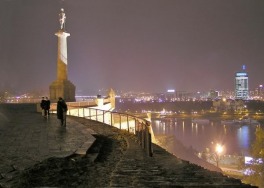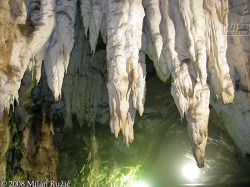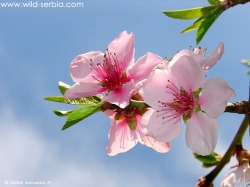About Serbia
Serbia
Officially the Republic of Serbia(Serbian: Република Србија, Republika Srbija), is a country located in both Central and Southeastern Europe. Its territory covers the southern part of the Pannonian Plain and central part of the Balkans. Serbia borders Hungary to the north; Romania and Bulgaria to the east; the Republic of Macedonia and Albania to the south; and Croatia, Bosnia and Herzegovina and Montenegro to the west. Belgrade is the capital of Serbia and the largest city.
Belgrade
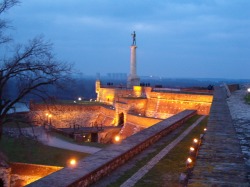
Belgrade is the capital and largest city of Serbia. The city lies on two international waterways, at the confluence of the Sava and Danube rivers, where Central Europe's Pannonian Plain meets the Balkans. Likewise, the city is placed along the pan-European corridors X andVII.With a population of 1,630,000 (official estimate 2007),Belgrade is the fourth largest city in Southeastern Europe, after Istanbul, Bucharest and Athens.
Currency
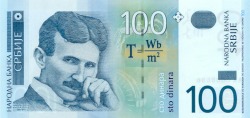
The Serbian Dinar is the currency of Serbia (RSD)
1 RSD = 0.01071 EURO
1 RSD = 0.01530 USD
1 RSD = 1.43946 JPY
1 RSD = 0.10544 CNY
1 RSD = 0.01071 EURO
1 RSD = 0.01530 USD
1 RSD = 1.43946 JPY
1 RSD = 0.10544 CNY
Population,Lanugage,Religion
The ethnic composition of the population of the Republic of Serbia is very diverse, which is a result of the country's turbulent past. The majority of the population of Serbia are Serbs, but another 37 ethnicities also live on its territory. All citizens have equal rights and responsibilities and enjoy full ethnic equality.
The Constitution of the Republic of Serbia guarantees rights to minorities, in accordance with the highest international standards. The latest 2002 census puts the population of Serbia (excluding Kosovo-Metohija) at 7,498,001, which made up 92.3% of the population of the former State Union of Serbia-Montenegro. Serbs make up 82.86% of the population, Hungarians 3.91%, Bosniaks 1.81%, Roma 1.44%, Yugoslavs 1.08%, Croats 0.94%, Montenegrins 0.92%, Albanians 0.82%, Slovaks 0.79%, Vlachs 0.53%, Romanians 0.46%, Macedonians 0.34%, Bulgarians and Vojvodina Croats 0.27% each, Muslims 0.26%, Ruthenians 0.21%, Slovaks and Ukrainians 0.7% each, Gorani 0.06%, Germans 0.05%, and Russians and Czechs 0.03% each.
he official language in Serbia is Serbian and the script in official use is Cyrillic, while Latin script is also used. In the areas inhabited by ethnic minorities, the languages and scripts of the minorities are in official use, as provided by law.
The main religion of Serbia is Christian Orthodox, the faith of the Serbian people. The Serbian Orthodox Church, which has been autonomous since 1219, has played an important role in the development and preservation of the Serbian national identity. Beside the Christian Orthodox population, there are also other religious communities in Serbia: Islamic, Roman Catholic, Protestant, Jewish and others
The Constitution of the Republic of Serbia guarantees rights to minorities, in accordance with the highest international standards. The latest 2002 census puts the population of Serbia (excluding Kosovo-Metohija) at 7,498,001, which made up 92.3% of the population of the former State Union of Serbia-Montenegro. Serbs make up 82.86% of the population, Hungarians 3.91%, Bosniaks 1.81%, Roma 1.44%, Yugoslavs 1.08%, Croats 0.94%, Montenegrins 0.92%, Albanians 0.82%, Slovaks 0.79%, Vlachs 0.53%, Romanians 0.46%, Macedonians 0.34%, Bulgarians and Vojvodina Croats 0.27% each, Muslims 0.26%, Ruthenians 0.21%, Slovaks and Ukrainians 0.7% each, Gorani 0.06%, Germans 0.05%, and Russians and Czechs 0.03% each.
he official language in Serbia is Serbian and the script in official use is Cyrillic, while Latin script is also used. In the areas inhabited by ethnic minorities, the languages and scripts of the minorities are in official use, as provided by law.
The main religion of Serbia is Christian Orthodox, the faith of the Serbian people. The Serbian Orthodox Church, which has been autonomous since 1219, has played an important role in the development and preservation of the Serbian national identity. Beside the Christian Orthodox population, there are also other religious communities in Serbia: Islamic, Roman Catholic, Protestant, Jewish and others
Climate
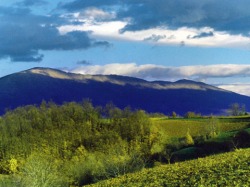
Temperate continental climate, with a gradual transition between the four seasons of the year.The highest recorded temperature was –39.5 °C,January 13 1985, and the lowers temperature recorded was 44.9 °C, July 24th 2007.Average annual temperature is 10.0 °C.
Government
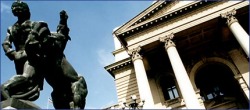
Democratic republic. The president and the parliament are elected every four years in general elections. Current president of Serbia is Boris Tadic.
Area

88,361 km²
Time

GMT + 1
National Parks

- Fruška Gora (250 km2)
- Kopaonik (120 km2)
- Tara (220 km2)
- Đerdap (640 km2)
- Šar Mountains (390 km2)
Geography
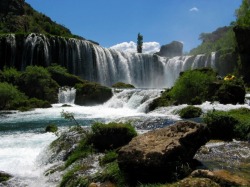
Serbia is at the crossroads between Central-, Southern- and Eastern Europe, between the Balkan peninsula and the Pannonian Plain. Serbia offers an outstanding potential when river transportation is concerned.Although landlocked, there are around 2000 km of navigable rivers and canals,the largest of which are: the Danube, Sava,Tisa, joined by the Timiş River and Begej, all of which connect Serbia with Northern and Western Europe (through the Rhine-Main-Danube Canal – North Sea route), to Eastern Europe (via the Tisa, Timiş, Begej and Danube Black Sea routes) and to Southern Europe (via the Sava river). The two largest Serbian cities – Belgrade[53] and Novi Sad, as well as Smederevo – are major regional Danubian harbours.Over a quarter of Serbia (27%) is covered by forest.In 2010, as projected, the national parks will take up 10% of the country's entire territory.
Biodiversity

Due to its location and climate Serbia has a richly diversed population of many different species, from plants to animals to fungi.
